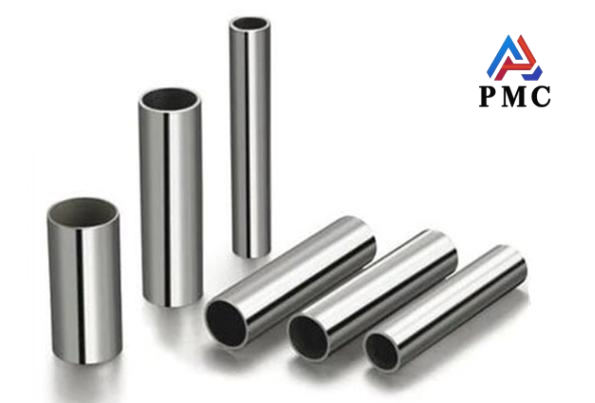In modern industrial and civil fields, 316 stainless steel pipes are widely used due to their excellent corrosion resistance, high strength and good processing performance. However, in some extreme working conditions or scenarios with extremely high requirements for medium purity, the performance of 316 stainless steel alone is still not enough to meet the needs. At this time, coating the inner wall of 316 stainless steel pipe has become an important means to improve its performance and expand its application range.
Necessity of coating treatment on the inner wall of 316 stainless steel pipe
Although 316 stainless steel contains molybdenum and has strong corrosion resistance, local corrosion such as pitting corrosion and crevice corrosion may still occur in environments with strong acids and alkalis, high concentrations of chloride ions or other special media. By applying a specific coating on the inner surface of the pipe wall, a dense protective film can be formed to further isolate the direct contact between the medium and the metal, significantly improving the corrosion resistance of the pipe.
In the food and beverage, pharmaceutical, semiconductor and other industries, the purity requirements for the medium are almost stringent. Even a trace amount of metal ions precipitated from the inner wall of 316 stainless steel pipe or impurities adsorbed on the surface may affect the product quality. Coating treatment can effectively reduce the activity of the metal surface, reduce ion migration and impurity adsorption, and ensure the high purity of the medium and the safety of product quality. In addition, the smooth coating can also reduce the friction resistance during fluid transportation, improve the transportation efficiency of the pipeline and reduce energy consumption.
Common coating types and characteristics
- Polytetrafluoroethylene (PTFE) coating
PTFE coating is known for its excellent chemical stability. It hardly reacts with any chemical substances. It is resistant to strong acids, strong alkalis and various organic solvents and can be used for a long time in the temperature range of -196℃ to 260℃.
Its surface has extremely low surface energy, is not easy to adhere to substances, and has excellent self-lubrication. It is very suitable for pipelines in the food and chemical industries, such as conveying viscous liquids, corrosive chemical reagents and other media. It can not only prevent the media from corroding the pipeline, but also facilitate pipeline cleaning and maintenance.
- Epoxy coating
Epoxy resin coating has good chemical corrosion resistance, water resistance and wear resistance, strong adhesion to metal surfaces, and can effectively fill tiny defects on the metal surface to form a continuous and dense protective film. It is widely used in drinking water transportation, sewage treatment and other fields. It can not only prevent rust and corrosion of the inner wall of the pipe, but also ensure that the water quality is not polluted and meets the requirements of drinking water hygiene standards. In addition, the epoxy resin coating has a certain flexibility and can adapt to the deformation of the pipe within a certain range.
- Ceramic coating
Ceramic coating is mainly composed of ceramic materials such as alumina and zirconium oxide, and has the characteristics of high hardness, good wear resistance, high temperature resistance and strong chemical stability. It performs well under high temperature and high wear conditions, such as high temperature steam pipes in industrial boilers and slurry pipelines in mines. The ceramic coating can withstand the erosion of high-temperature steam and the friction of solid particles in the slurry, extending the service life of the pipeline. At the same time, its chemical inertness can effectively resist the corrosion of the medium.
Coating Process
- Surface preparation
Before coating, surface preparation of the inner wall of 316 stainless steel pipe is very important. First, mechanical cleaning is used, such as using a special pipe cleaning brush, high-pressure water jet, etc. to remove impurities such as oil, rust, and welding slag on the inner wall; Then chemical cleaning is carried out, using a suitable acid wash or alkaline wash to further remove the oxide film and residual impurities on the metal surface; Finally, the surface is roughened by sandblasting, electrolytic etching and other methods to increase the roughness of the metal surface and improve the adhesion between the coating and the substrate.
- Coating
Depending on the coating material and application requirements, a variety of coating methods can be used. For PTFE coating, the spraying method is often used. After mixing PTFE powder with a binder, it is evenly sprayed onto the inner wall of the pipe through a high-pressure spray gun, and then the coating is solidified by high-temperature sintering. Epoxy resin coating can be applied by brush, roller or high-pressure airless spray to form a uniform coating on the inner wall of the pipe, and then cured at a certain temperature.
Ceramic coatings are mostly made using thermal spraying technology, such as plasma spraying, supersonic flame spraying, etc. The ceramic powder is heated to a molten or semi-molten state and sprayed onto the inner wall of the pipe at high speed to form a dense ceramic coating.
- Post-processing
After the coating is applied, post-processing steps are required. For some cases where the coating performance needs to be further improved, heat treatment can be performed, such as high-temperature baking, to make the coating molecular structure more stable and enhance the hardness and wear resistance of the coating; At the same time, the coating is quality inspected by visual inspection, coating thickness gauge, adhesion test and other means to check whether the coating thickness, uniformity, adhesion and other indicators meet the requirements to ensure that the coating treatment effect meets the expected standards.
Read more: Pressure Resistance Performance of 316 Stainless Steel Pipes

Leave a Reply
You must be logged in to post a comment.